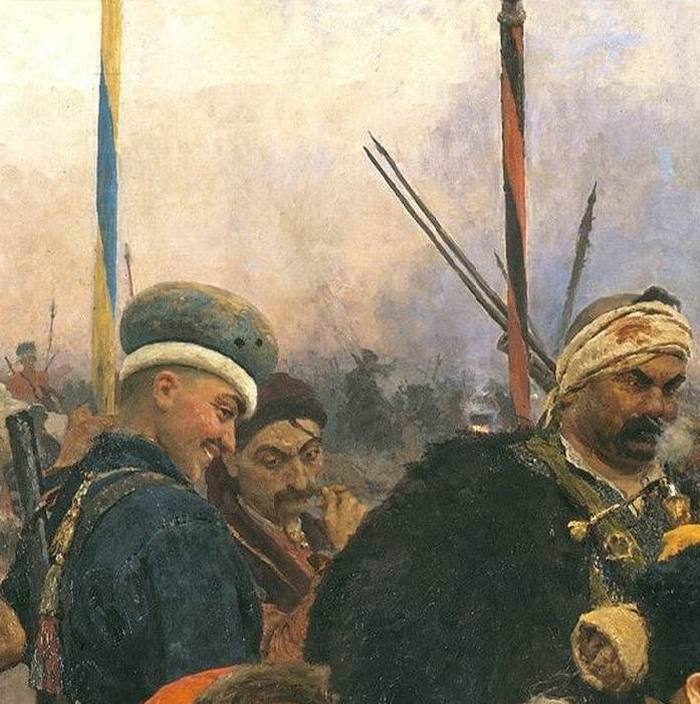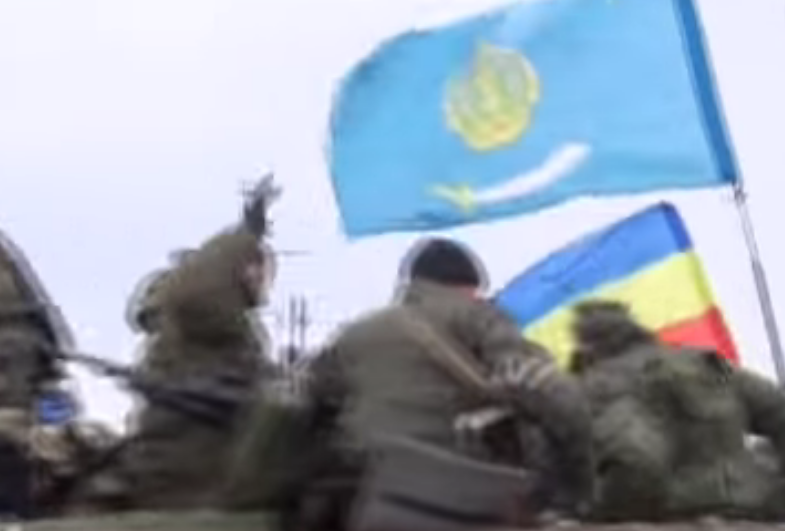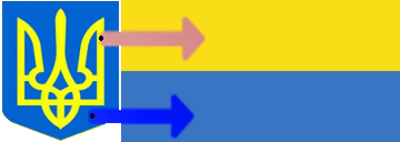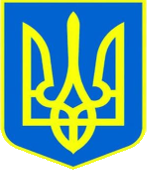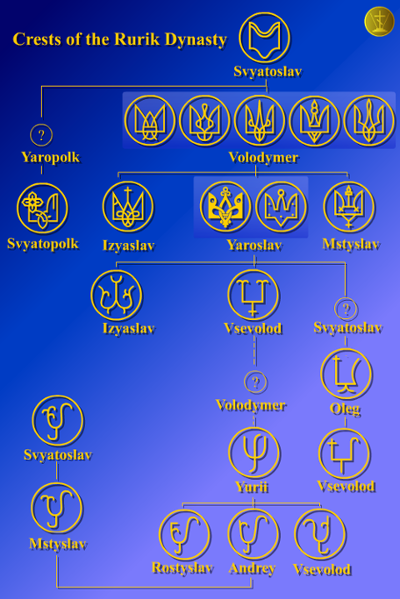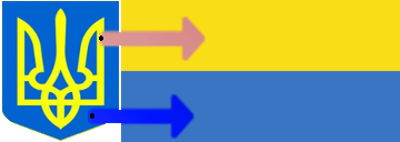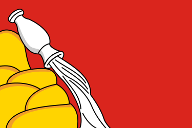Coats of arms of capital cities of Ukraine |
|---|
|
The period of establishment of Soviet power in Ukraine is the most interesting
from the view point of the heraldry history of Ukraine cities.
At this time, the will of the urban population gained more freedom without the
watchful eye of the ”big brother”. [3]
|
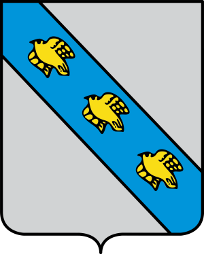
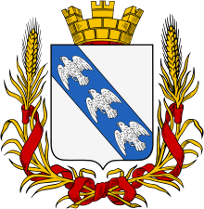
| Kursk
The creation of the government of Soviet Ukraine was announced in a railway car
at the station in Kursk (a Ukrainian-speaking city at the time) on November 28,
1918, and the Ukrainian city of Suja was named as its center at the time, which
on August 14, along with Bilhorod, became part of the Kharkiv province. The city
of Suja had a very short-lived capital status, so it is not mentioned as the
capital of Soviet Ukraine. [3]
In the picture on the left above is the historical coat of arms of Kursk in 1780.
Below is the coat of arms of 1859 approved by the Russian royal authorities.
[4].
Today, the historical coat of arms of Kursk in 1780 is more often depicted with
white, not yellow falcons, like the imperial coat of arms of 1859. Which color is
correct can be judged by the following image of 6 districts of the Kursk region
at the end of the text (below). [4]
The change in the color of the birds can be explained by the hatred of the
Romanov dynasty for everything yellow and blue as a reminder of the Rurik dynasty
.
Click on the picture to see the coats of arms of all districts of the Kursk
region [4] |
 |
|
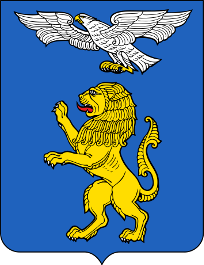
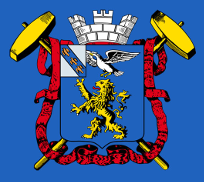 | Belgorod
On December 27, 1918, at a meeting of the government of Soviet Ukraine headed
by Heorhiy Pyatakov, a decision was made to move the capital to Belgorod.
The next day, the government moves to Belgorod. [3]
After pressure from Moscow, the Ukrainian government was forced to give up the
Bilhorod and Graivoronsky poviats (districts), and on February 7, 1919, the
resolution of the National Council of the Ukrainian SSR ”On administrative
management in the territory of the front line of Ukraine” was approved
(published on February 11), which was the border of the Kharkiv province,
and therefore, and the USSR, its pre-war borders were determined. [3]
Another question about borders was raised in February 1929 at a meeting of
Ukrainian writers with the General Secretary of the Central Committee of the
All-Union Communist Party of Ukraine (b) Joseph Stalin, to which the answer was
received: ”We in the Central Committee studied the issue twice and left it
without consequences. We have to be especially careful, because such changes
provoke huge opposition from some Russians”. [3] |
|
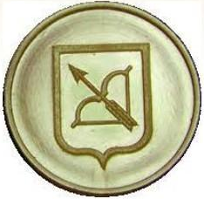
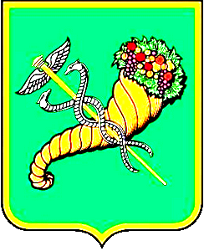 | Kharkiv
On January 3, 1919, the Red Army captured Kharkiv, where the government of Soviet
Ukraine immediately moved. Kharkiv was more attractive for the capital due to its
developed industry, transport and communication. [3]
The coat of arms of Kharkiv in the first period of its history as a regimental
fortress city (1654-1765) is considered to be a black image of a drawn bow with
an arrow on a gold cartouche field, mentioned in
”Chronogeographic Description of the City of Kharkiv” (1767) by Maksym
Gorlenskyi's: ”The city of Kharkiv has long been the coat of arms is a
stretched bow with an arrow”.
The modern coat of arms of Kharkov (bottom, left) is dated 1776 as the coat of
arms of the Kharkov Hussar Regiment from the armorial of M. Shcherbatov.
In 1781, it was approved by Catherine II as the coat of arms of the city of
Kharkov. |
|
Kyiv
The history of Kyiv is younger than the history of Vyshgorod, which is located
on the high hills of the right bank of the Dnieper river, a little above Kyiv and
the mouth of the Desna river, near an important crossing on trade routes.
This city cannot be overlooked in the history of the coat of arms of ancient
Rus'. The photo below shows the ancient defense line of Vyshhorod.
 |
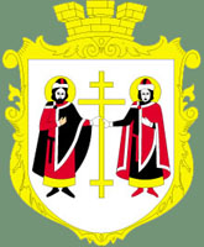
 |
The city of Vyshhorod is first mentioned in the ”Tale of Timeless Years” around
946 AD as the estate (residence) of Princess Olga - ”Olzhyn Grad”. This is the
status of the ”capital city”, thanks to which Kyiv was founded. The coat of arms
of the city (pictured on the left) is connected with the ancient temples of this
city.
Considerably interesting from the point of view of the history
of heraldry of ancient cities of Rus' and Ukraine is the flag of Vyshgorod.
The Vyshhorod city flag is one of the first documented appearances of a red-black
color, which was used by the Zaporozhian Cossacks and other warriors. |
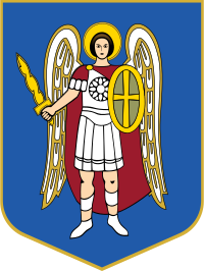 |
Kyiv has a coat of arms (Archangel Michael) which is mentioned and depicted in
ancient religious chronicles.
In 1934, by decision of the People's Committee of the Ukrainian SSR,
the capital of the republic was moved from Kharkiv to Kyiv. In the same year,
under pressure from Moscow, Kuban switched from Ukrainian to Russian in business.
4 years before that, in large cities (Kursk, Voronezh, Bilhorod) which,
under the pressure of Moscow, withdrew to the Russian Federation, the printing
of Ukrainian-language newspapers and other periodicals was stopped
(under the pressure of the same force). |
